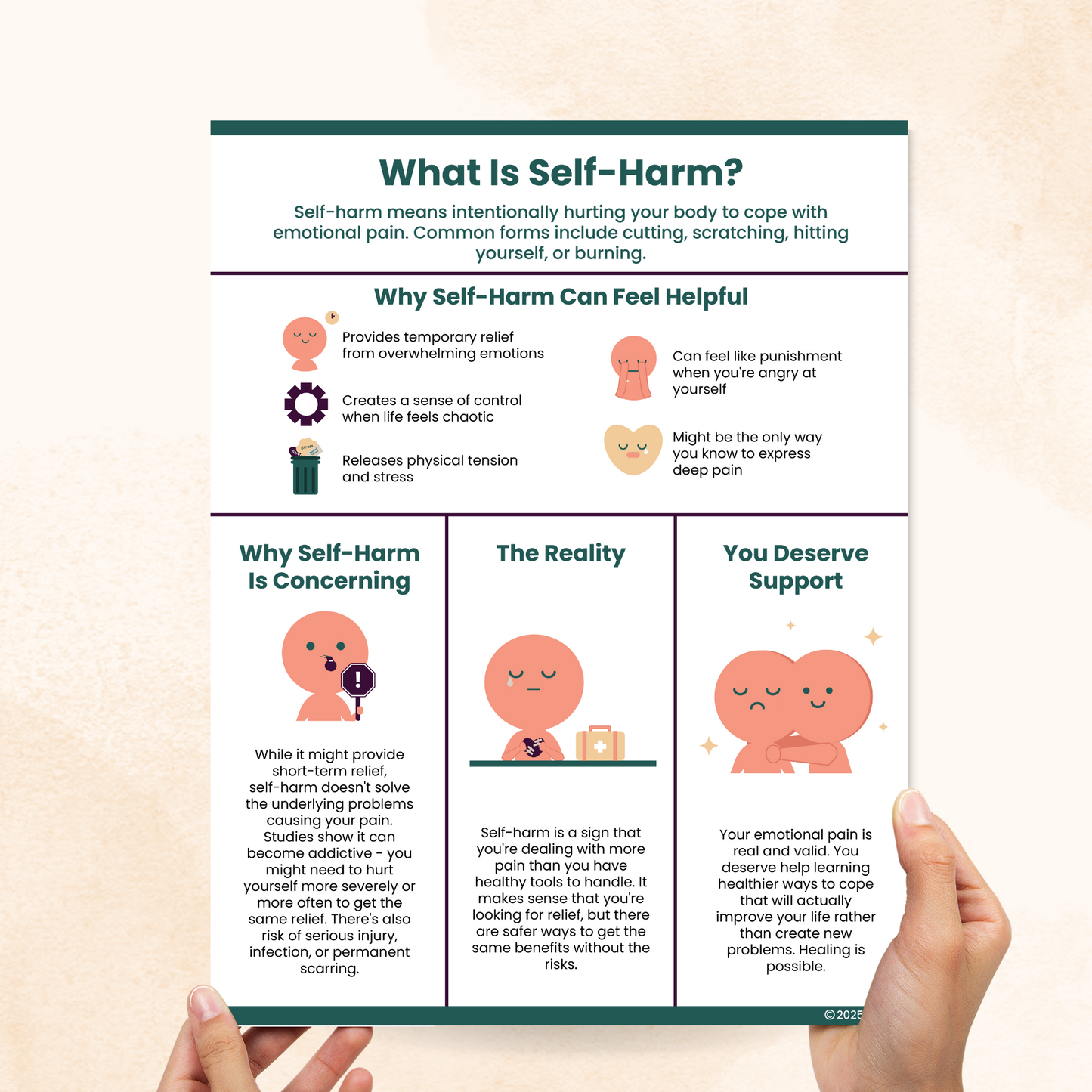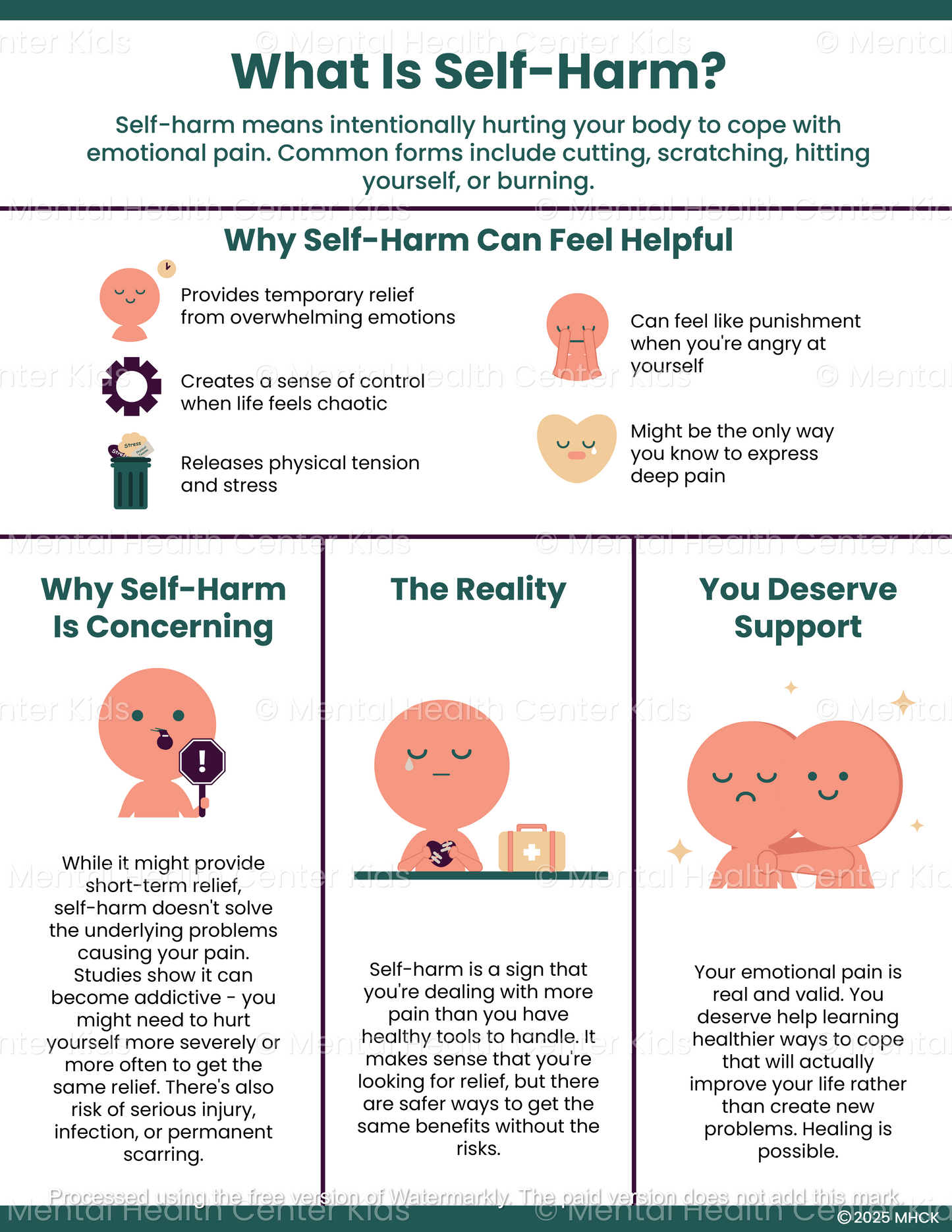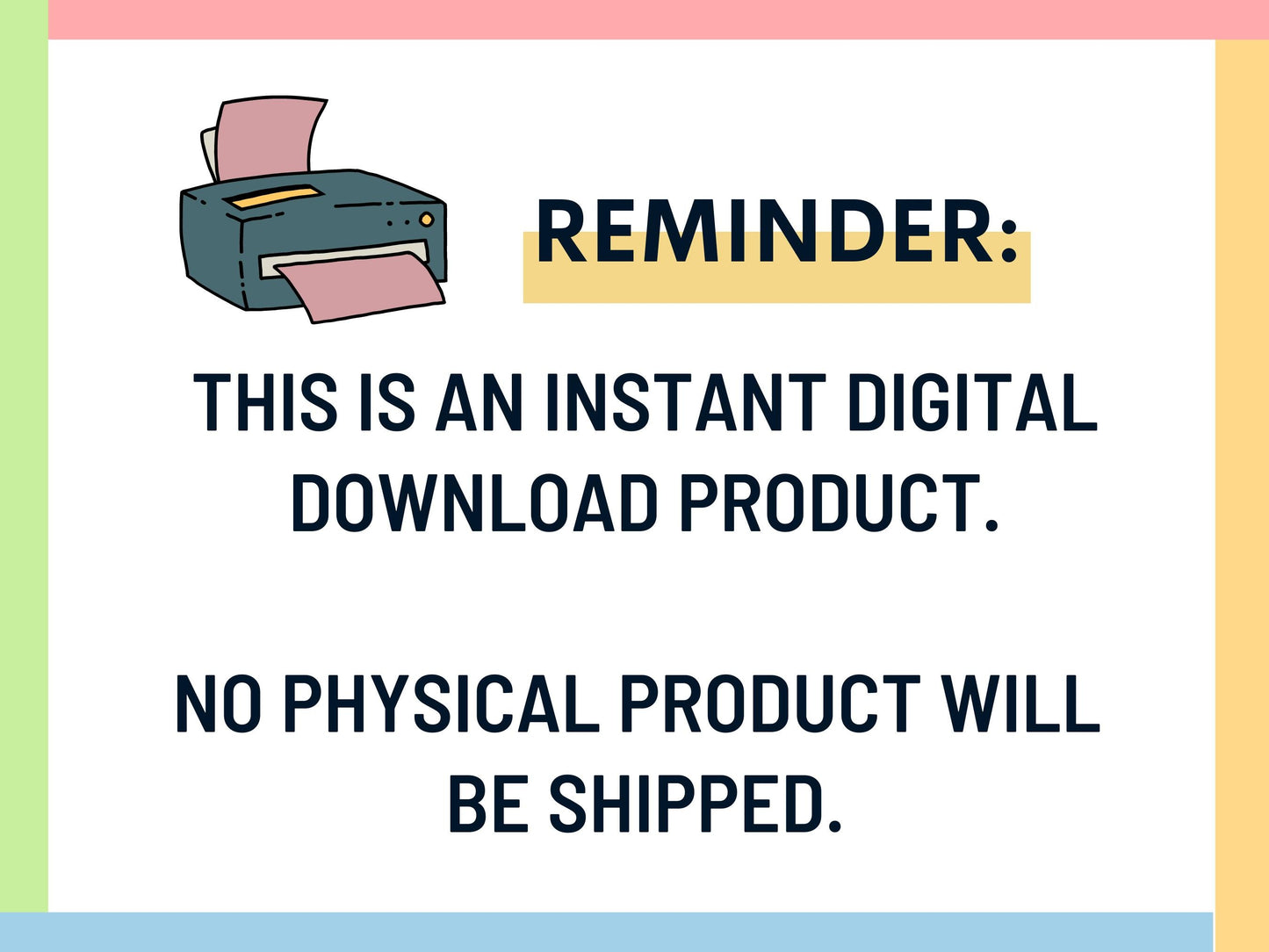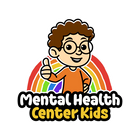What Is Self-Harm? (PDF)



Self-harm happens when a person intentionally hurts themselves to cope with emotional pain or difficult experiences. Some view it as a “necessary” pain that brings brief relief, but it does not solve the real problem, and often creates more harm in the long run. Research shows that certain interventions can help reduce self-harm, yet rates among clients continue to rise.
The What Is Self-Harm? handout was created to raise awareness and understanding of why this behavior occurs and why it can be difficult to stop. It explains how self-harm may seem to bring relief while highlighting the serious risks and dangers involved. The handout also reminds clients that they deserve support.
Sharing this handout can be an essential step in breaking the cycle of self-harm. While urges can feel intense, simple strategies — like using distraction and committing to wait a short amount of time before acting — can create enough space for the urge to pass.
Caring adults can encourage kids and teens to reach out to a trusted person, connect with a counselor, or explore safe mental health resources and coping tools.
*This item is an instant digital download. A link to download your files will be emailed to you once payment is confirmed.
Want more resources like this? Check out our full catalog of depression worksheets and handouts.
References:
- Edmondson, A. J., Brennan, C. A., & House, A. O. (2016). Non-suicidal reasons for self-harm: A systematic review of self-reported accounts. Journal of Affective Disorders, 191, 109-117. https://doi.org/10.1016/j.jad.2015.11.043
- Lindgren, B., Wikander, T., Neyra Marklund, I., & Molin, J. (2021). A necessary pain: A literature review of young people’s experiences of self-harm. Issues in Mental Health Nursing, 43(2), 154-163. https://doi.org/10.1080/01612840.2021.1948640
- Moran, P. (2015). Adolescents who self-harm are at increased risk of health and social problems as young adults. Evidence Based Mental Health, 18(2), 52-52. https://doi.org/10.1136/eb-2014-102018
- Varo, C., Barrigón, M. L., Rider, J., Reguera, P., Mayo-Jaraquemada, A., Canal-Rivero, M., Garrido-Torres, N., Baca-Garcia, E., Ruiz-Veguilla, M., & Crespo-Facorro, B. (2025). Characteristics of self-harm in an emergency situation among youth: A longitudinal five- Year cohort study. Research on Child and Adolescent Psychopathology. https://doi.org/10.1007/s10802-025-01309-x
- Witt, K., Stewart, A., & Hawton, K. (2024). Practitioner review: Treatments for young people who self‐harm – challenges and recommendations for research and clinical practice. Journal of Child Psychology and Psychiatry, 66(1), 122-131. https://doi.org/10.1111/jcpp.14052
- Instant digital download
- File: PDF
- Size: 8.5" x 11"




